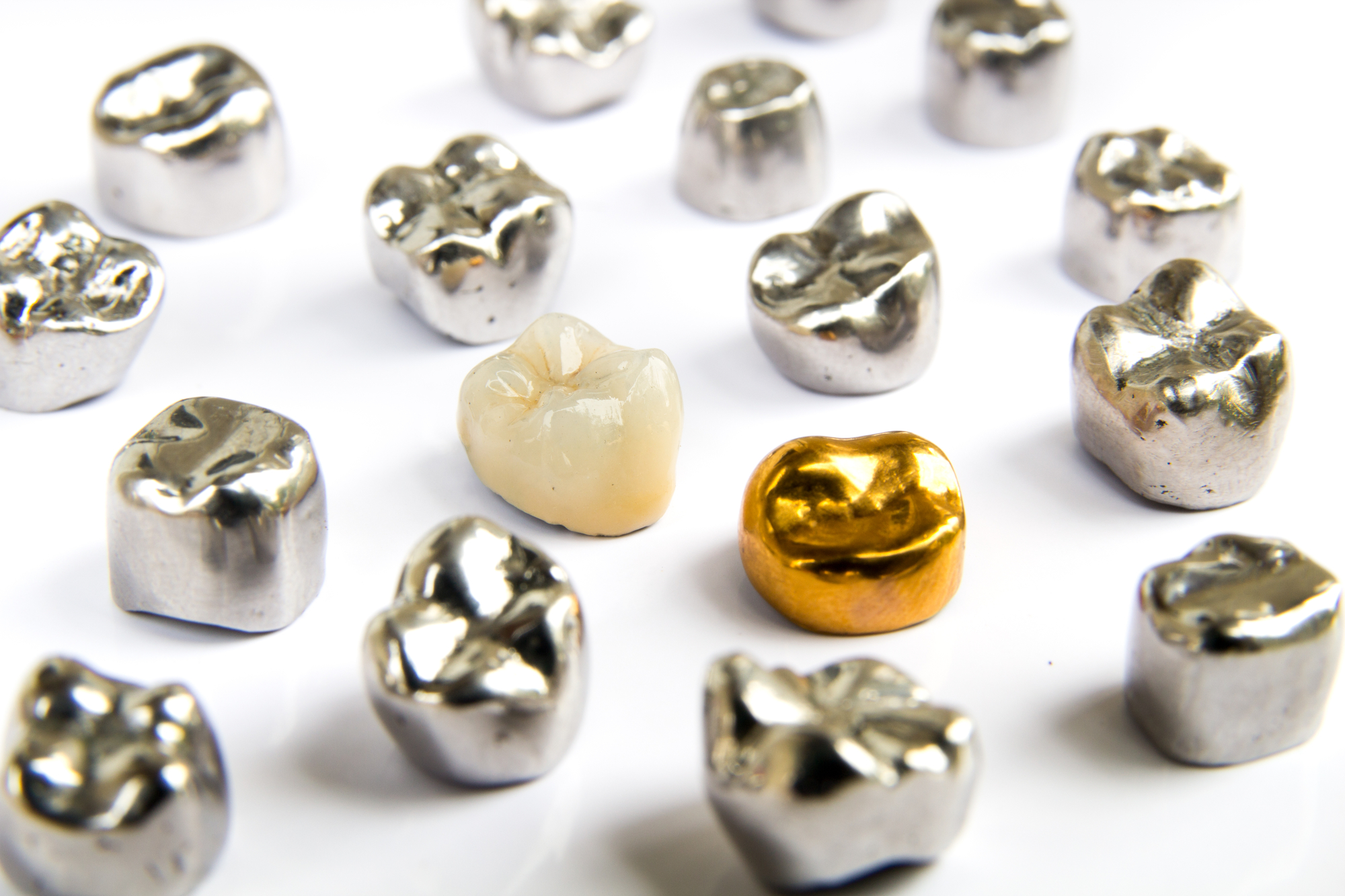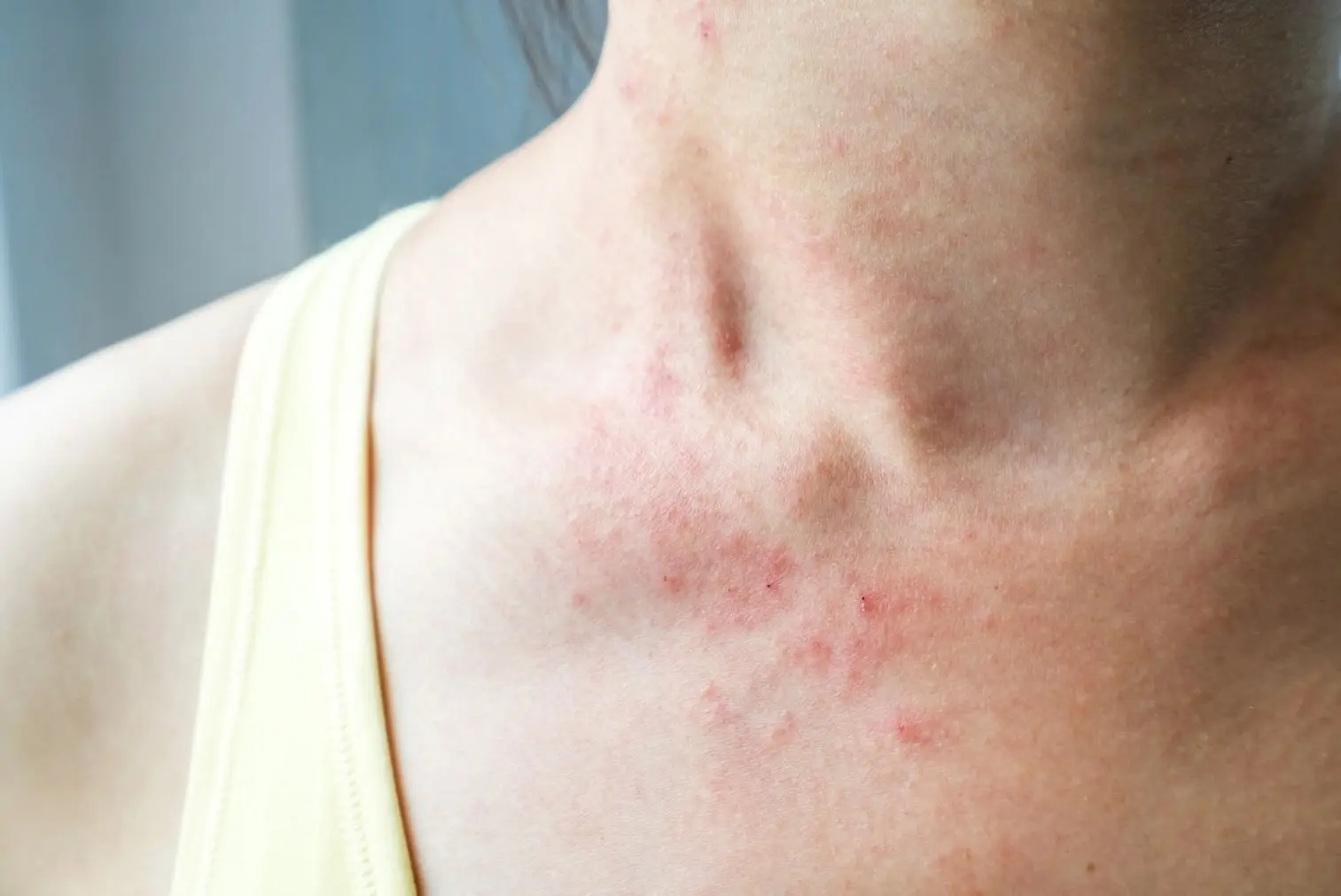Last Updated on: 5th December 2024, 10:16 am
Can Dental Health Cause Eczema?
The term eczema refers to any inflammation of the skin, known as dermatitis. It defines a set of skin diseases that have different causes. One of the most frequent triggers are allergic-type reactions, whether by inhalation, ingestion, or direct skin contact with allergens.
During a dental consultation, various materials and substances are used, which in specific cases could trigger an allergic reaction. The most common allergies are manifested as inflammation and changes in the skin, although in very rare cases they can cause more serious reactions in the body. We will talk about the types of allergies in dentistry and the factors that could trigger them.
What is an allergy?
An allergy is an exacerbated reaction of the immune system to something that doesn’t bother or harm most people. Throughout the body, there are defenses in charge of protecting the organism against certain threats, but when allergies manifest, these defenses recognize substances not necessarily harmful as enemies.
Basic points about allergies:
-
- It is common for a person allergic to one substance to be allergic to many others.
- No one is born with allergies. They develop after the body has become familiar with its surroundings. For this reason, it may be common for patients to come into contact with a certain substance one time and not suffer a reaction, yet present an allergic reaction through repeated contact.
- Some allergies generate only skin reactions while others cause more serious reactions at the level of the respiratory system or can even end up compromising the whole body. Most allergies that occur in dentistry are related to contact with the skin or mucosa.
Types of allergies in dentistry
During the dental consultation, two types of allergic reactions can occur:
Immediate: It usually occurs within an hour of exposure to the material that caused the allergy. You may have mild symptoms such as itching and reddening of the skin to more serious reactions such as a tight feeling in the chest or shortness of breath, a drop in blood pressure, swelling, airway obstruction, and wheezing, among others. In serious, extreme, and very rare cases, this can compromise life.
Retarded: It occurs more than an hour after exposure to the substance in question, as with allergies caused by contact with the skin or mucous membranes. The most common symptom is eczema or dermatitis, an inflammation of the skin located in the area that came into contact with the allergen. Its symptoms are redness, itching, and discomfort or pain in the area.
What is contact dermatitis?
Contact dermatitis, also known as eczema or eczema, refers to an inflammation of the skin, which can be generated by the interaction of materials or substances with the skin. If it is a delayed allergy, the symptoms can include a reddish, itchy rash that sometimes causes small bumps and blisters filled with fluid. It may be limited to the area of the skin that came into contact with the substance that generated the allergy (the allergen).
Why does contact dermatitis occur?
Contact dermatitis is caused by something touching (making contact with) the skin. There are two forms:
Irritant contact dermatitis (non-allergic): It occurs when a substance that comes into contact with the skin is irritating and generates a rash in most people. Some examples of irritant dermatitis are those caused by acids, soaps, or friction.
Allergic contact dermatitis: This happens when things not normally irritating come into contact with the skin and cause a rash because the patient is allergic to them. It is usually produced by substances that normally do not cause reactions in other people, only in those who are allergic. Contact dermatitis has a delayed response, that is, lesions do not appear immediately after contact, but develop slowly after exposure to the material in question (allergen).
Materials and supplies in dentistry that can cause allergies
The products used in dentistry that come into direct contact with the skin and mucous membranes have been subjected to different tests to guarantee their safe use. For this reason, most skin reactions produced by them are usually allergic and can occur both on the skin (dermatitis) and the mucosa (stomatitis). The dental materials that have been reported to trigger allergic reactions are listed below:
1. Alginate
Alginate is a material used for taking impressions of the oral cavity. It is a paste composed of seaweed extracts, among other substances, which is used to make a model or copy of the mouth. It is widely used when dental prostheses or orthodontic treatments (brackets) are to be performed.
2. Acrylic resins
Resins are the material of which dental restorations are made, also known as shims or cures. They are a tooth-colored mass that is activated and hardens with ultraviolet light. When not enough light is applied to the resin and it does not fully harden (polymerize), it can cause allergies when in contact with the oral mucosa.
3. Latex
In the dental office, latex can be found in gloves or in dams used to isolate teeth from the rest of the mouth during some treatments. Latex allergies can cause reactions that are usually immediate, with symptoms ranging from mild to severe.
4. Eugenol
Eugenol is one of the most widely used and well-known products in temporary restorations in dentistry. It is highly soluble in humid media (the saliva) and saturation of this product in the oral cavity can trigger toxicity and allergic hypersensitivity.
5. Dental alloys
Metal alloys such as nickel, chromium, cobalt, and platinum are widely used in dentistry for the manufacture of dental prostheses (tooth boxes), dental restorations (dressings or fillings), crowns, implants (prostheses screwed to the bone), appliances and orthodontic wires. Therefore, they come into contact with the mucous membranes, and in overly sensitive patients, they can cause irritation. It is a reaction similar to what occurs from the use of jewelry made of certain types of metal. In general, patients who have had these allergic reactions to jewelry are more prone to allergies to dental metals.
6. Local anesthetics
Allergies to anesthetics used in dentistry are very rare. However, when these occur, they constitute an allergic reaction to medications, which is generally immediate.
Tips to avoid allergic reactions
The risk of developing an allergy is always present, and even more so in children. So if you are wondering how can dental health cause eczema, whenever a substance is applied or any material comes into contact with oral tissues, there is a chance that an allergic reaction may or may not be triggered. However, there are recommendations to avoid allergic reactions in the dental office:
-
- If in the past you have had allergic reactions to any material during a dental visit, inform the treating professional so that he or she can take the necessary precautions: for example with the use of gloves or other materials.
- If you have frequent allergic reactions, check with your doctor to determine what other substances you may be allergic to by using tests designed for this purpose. This can prevent allergic reactions in the future.
- If during or after the dental consultation, you show any of the symptoms mentioned, inform the treating professional.
Conclusion
Allergies in dentistry generally constitute delayed hypersensitivity reactions to dental materials. This type of allergic reaction presents as a lesion on the skin or mucosa at a localized site after contact with the material (allergen). So, can dental health cause eczema? Yes, although true, allergies to dental materials are considered rare, such reactions are on the rise today. However, it is not possible to discontinue the use of certain materials since these cases are not widespread. Therefore, it is essential to take the necessary precautions to reduce the possibility of suffering an allergic reaction.
Contact us
If you have any questions about this or other topics, you can contact us at Channel Islands Family Dental as well as our page on Facebook. We look forward to your visit and we will make a timely diagnosis. Our dentists in Oxnard, Santa Paula, Ventura, Newbury Park, and Port Hueneme will be able to guide you toward the best treatment to take care of your health and give you back your best smile.
Bibliography
- Lugović-Mihić, L., Ferček, I., Duvančić, T., Bulat, V., Ježovita, J., Novak-Bilić, G., & Šitum, M. (2016). OCCUPATIONAL CONTACT DERMATITIS AMONGST DENTISTS AND DENTAL TECHNICIANS.Acta clinica Croatica, 55(2), 293–300. https://doi.org/10.20471/acc.2016.55.02.17
- Rubel, D. M., & Watchorn, R. B. (May, 2000). Allergic contact dermatitis in dentistry. The Australasian journal of dermatology, 41(2), 63–71. https://doi.org/10.1046/j.1440-0960.2000.00398.x
- Allergy to local anaesthetic agents used in dentistry – what are the signs, symptoms, alternative diagnoses and management options? (Ago 10, 2019). SPS – Specialist Pharmacy Service. https://www.sps.nhs.uk/articles/allergy-to-local-anaesthetic-agents-used-in-dentistry-what-are-the-signs-symptoms-alternative-diagnoses-and-management-options/
- Arya, V., Arora, G., Kumar, S., Kaur, A., & Mishra, S. (Nov 26, 2021). Management of patients with allergy to local anesthetics: two case reports. Journal of dental anesthesia and pain medicine, 21(6), 583–587. https://doi.org/10.17245/jdapm.2021.21.6.583
- Raap, U., Stiesch, M., Reh, H., Kapp, A., & Werfel, T. (2009). Investigation of contact allergy to dental metals in 206 patients. Contact dermatitis, 60(6), 339-343. https://www.derm.theclinics.com/article/S0733-8635(18)30156-6/abstract
- Chaturvedi, T. P. (2013). Allergy related to dental implant and its clinical significance. Clinical, Cosmetic and Investigational Dentistry, 57-61. https://www.tandfonline.com/doi/abs/10.2147/CCIDE.S35170
- Kanerva, L., Estlander, T., & Jolanki, R. (1994). Occupational skin allergy in the dental profession. Dermatologic clinics, 12(3), 517-532: https://onlinelibrary.wiley.com/doi/abs/10.1111/j.1600-0536.2009.01524.x



















